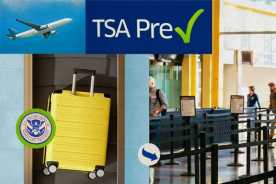AARP Hearing Center


The Senate passed legislation Nov. 10 to fund federal agencies and programs through at least Jan. 30, a significant step toward ending the longest government shutdown in U.S. history. The measure must still clear the House and be signed by President Donald Trump before agencies can reopen and suspended services can be restored.
The shutdown began at 12:01 a.m. Oct. 1 after Congress was unable to reach a deal to fund federal operations after the 2025 fiscal year ended the previous day. Most federal curtailed operations.
During a shutdown, certain government activities deemed “essential” continue even without a federal funding deal. Tens of millions of Americans continue to receive their Social Security, Medicare and veterans’ benefits, for example. People can still have their letters and prescription drugs delivered through the U.S. mail, among other essential services.
But many government functions and services have come to a halt, with significant impacts on older Americans. Hundreds of thousands of federal workers have been furloughed, and those whose jobs are deemed essential are working without pay, pending reimbursement when a funding package is ultimately approved.
The Senate-passed bill would fund some federal programs, including food assistance, military construction and veterans’ services, through fiscal year 2026, which ends Sept. 30, 2026. The rest of the federal government would be funded through Jan. 30, at current spending levels.
The measure would also ensure that furloughed federal workers receive back pay and that government employees laid off during the shutdown are rehired.
Join Our Fight to Protect Older Americans
Here’s what you can do to help:
- Sign up to become an AARP activist for the latest news and alerts on issues you care about.
- Find out more about how we’re fighting for you every day in Congress and across the country.
- AARP is your fierce defender on the issues that matter to people 50-plus. Become a member or renew your membership today.
The last time the federal government largely shut down was from Dec. 22, 2018, to Jan. 25, 2019. That 35-day lapse had been the longest in history, but it’s been eclipsed by the current shutdown.
Since 2019, Congress has repeatedly missed deadlines to adopt a budget but averted shutdowns by passing temporary spending bills called continuing resolutions. These stopgap measures keep the government functioning, typically at the previous year’s funding levels, while lawmakers negotiate the details of a new budget.
Here’s a look at how the shutdown is affecting these vital services.
Social Security
Social Security benefits are being paid as usual. They are considered mandatory spending, not subject to the annual congressional appropriations process, and have a dedicated funding source — the payroll taxes most U.S. workers pay on their earnings.
However, Congress does determine how much the Social Security Administration can spend on operations, and customer service can be affected by a shutdown. According to the SSA’s shutdown contingency plan, most routine services will continue, including processing applications for benefits, hearing cases on appeal, and issuing new and replacement Social Security cards. Field offices and phone lines remain open.
A few customer services have been suspended, according to the plan, including benefit verifications by phone and in-person at Social Security offices. You can still obtain a benefit verification letter online if you have a My Social Security account.


































































More From AARP
Expert Q&A on America’s Retirement Crisis
Two of AARP’s top lobbyists on insufficient funds and how AARP is working to fix that
5 Ways AARP Is Fighting for Social Security
Demanding better customer service, calling on Congress to secure future funds, plus more
Congress Members Share Caregiving Stories
How caring for a loved one shapes their work on Capitol Hill
Recommended for You